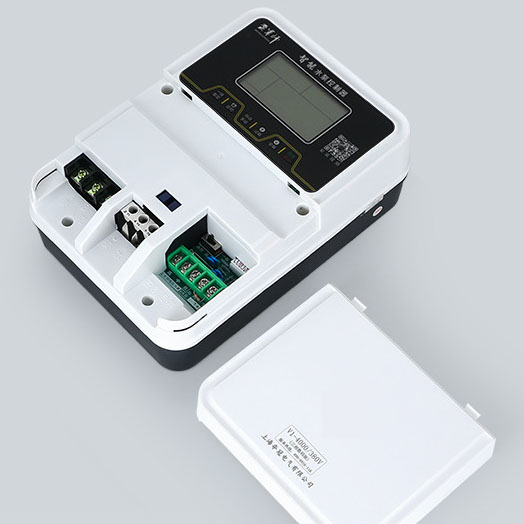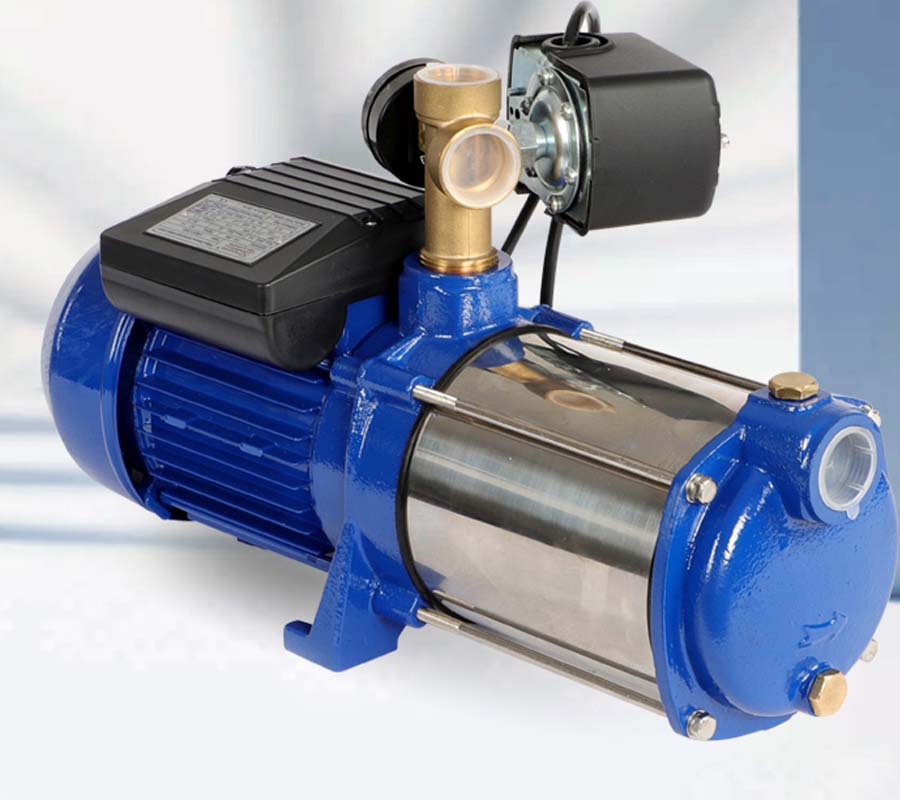Water pump controller is one of the indispensable key equipment in modern water conservancy projects and agricultural irrigation systems. With the development of science and technology, the functions and performance of water pump controllers have been continuously improved, which not only realizes automated management, but also significantly improves the utilization efficiency of water resources. However, many technical and management problems will be encountered in the design and use of water pump controllers. Based on this, this article will discuss three key issues in detail, aiming to provide valuable reference and guidance for users and other groups in need.

How does the water pump controller achieve efficient automated control?
The core principle of automated control
The water pump controller realizes automated control of the water pump through sensors, control algorithms and actuators. Its core principles include the following aspects:
1. Sensor technology: The water pump controller relies on various sensors (such as water level sensors, pressure sensors and flow sensors) to obtain real-time data. These sensors can accurately monitor the operating status of water sources, pipelines and water pumps.
2. Control algorithm: The microprocessor or PLC (programmable logic controller) inside the controller runs complex control algorithms, analyzes sensor data and makes corresponding control decisions. Commonly used algorithms include PID (proportional-integral-differential) control, fuzzy control and adaptive control.
3. Actuator: The controller adjusts the operating parameters of the pump, such as start, stop and speed adjustment, through relays, frequency converters or other actuators.
Advantages of efficient automatic control
1. Energy saving and consumption reduction: Through real-time monitoring and intelligent adjustment, the pump controller can adjust the operating status of the pump according to actual needs to avoid unnecessary energy waste. For example, frequency conversion control technology can adjust the speed of the pump according to flow demand to achieve energy-saving operation.
2. Extend equipment life: The automatic control system can prevent the frequent start and stop of the pump, reduce mechanical wear and electrical shock, and thus extend the service life of the pump.
3. Improve system reliability: The automatic control system can monitor the operating status in real time, detect and handle abnormal situations in time, and improve the reliability and stability of the entire water supply system.
Key technologies for achieving efficient automatic control
1. Advanced sensor technology: High-precision and high-reliability sensors are the basis for achieving automatic control. The development of modern sensor technology, including MEMS (micro-electromechanical system) sensors and fiber optic sensors, makes data acquisition more accurate and stable.
2. Intelligent control algorithm: The control algorithm based on artificial intelligence and machine learning can realize self-learning and adaptive control, improve the response speed and control accuracy of the system.
3. Internet of Things (IoT) technology: Through the Internet of Things technology, the water pump controller can realize remote monitoring and management. Users can view and control the operation status of the water pump in real time through mobile phones or computers to improve management efficiency.
What are the innovations in the application of water pump controllers in water-saving irrigation?
The importance of water-saving irrigation
Water shortage is one of the major challenges facing the world. Especially in agricultural irrigation, how to efficiently use limited water resources is particularly important. The application of water pump controllers in water-saving irrigation can significantly improve irrigation efficiency and reduce water waste.
Precision irrigation technology
1. Control based on soil moisture: The water pump controller obtains soil moisture data through soil moisture sensors, automatically determines whether irrigation is needed, and adjusts the irrigation amount and irrigation time according to real-time data. This precision irrigation technology can avoid over-irrigation and waste of water resources.
2. Drip irrigation system: Combined with the water pump controller, the drip irrigation system can accurately deliver water to the roots of plants, greatly reducing water evaporation and leakage losses. The water pump controller achieves efficient water-saving irrigation by adjusting the pressure and flow of the drip irrigation system.
3. Zoning irrigation: The water pump controller can control irrigation in different zones according to the water demand and growth stage of different crops, realizing scientific management and precise irrigation.
Intelligent irrigation management
1. Remote monitoring and control: Through the Internet of Things technology, users can remotely monitor and control the operation status of water pumps and irrigation systems through smartphones or computers, adjust irrigation strategies in real time, and improve management efficiency.
2. Data analysis and decision support: The water pump controller can collect and store a large amount of operation data, and provide users with scientific irrigation decision support through data analysis and model prediction. For example, adjust the irrigation plan according to the weather forecast to avoid unnecessary irrigation during rainfall.
3. Intelligent alarm and maintenance reminder: The water pump controller can monitor the system operation status in real time, and issue an alarm in time when abnormal conditions are found, reminding users to perform maintenance and inspection to ensure the normal operation of the irrigation system.

Utilization of renewable energy
1. Solar water pump system: Combined with solar panels, the water pump controller can realize solar-driven water pump operation, reduce dependence on traditional energy, and reduce operating costs and environmental impact.
2. Wind energy pump system: In areas with abundant wind energy resources, the pump controller can be combined with wind power generation equipment to realize wind energy driven pump operation, make full use of renewable energy, and improve the sustainability of irrigation systems.
How to maintain and optimize the performance of the pump controller?
Regular inspection and maintenance
1. Sensor calibration: The sensor is a key component of the pump controller to obtain real-time data. Regularly calibrating the sensor to ensure its accuracy and reliability is an important measure to maintain the performance of the pump controller. The drift and failure of the sensor will directly affect the judgment and decision-making of the controller, resulting in unstable system operation.
2. Electrical connection inspection: Check whether the electrical connection is firm to avoid electrical failures caused by poor contact. Especially in humid and dusty environments, electrical connections are prone to corrosion and contamination. Regularly clean and maintain the electrical connection parts to ensure the normal operation of the system.
3. Actuator maintenance: Actuators such as relays and frequency converters are key components of pump controllers. Regularly inspect and maintain the actuator to ensure that it is in good working condition and avoid system downtime caused by mechanical failure.
Software update and optimization
1. Control algorithm optimization: With the development of control technology, the control algorithm is continuously optimized and updated to improve the response speed and control accuracy of the system. Modern controllers usually have software upgrade functions. By regularly updating the software and applying the latest control algorithms and technologies, the system can maintain its advancement and efficiency.
2. Fault diagnosis and self-repair functions: Introduce fault diagnosis and self-repair functions to improve the self-management ability of the system. Through fault diagnosis technology, the system can timely detect and locate faults, take self-repair measures, reduce the impact of faults on system operation, and improve the reliability and stability of the system.
3. Remote maintenance and support: Using the Internet of Things technology, the water pump controller can achieve remote maintenance and technical support. By remotely monitoring the system operation status, timely discovering and handling abnormal situations, providing fast-response technical support services, and improving the maintenance efficiency and service level of the system.
Data analysis and optimization
1. Operation data analysis: By collecting and analyzing the operation data of the water pump controller, understand the operation status and performance indicators of the system. Data analysis can help discover bottlenecks and problems in system operation and provide a scientific basis for optimization and improvement. For example, by analyzing energy consumption data, optimize the operation strategy of the water pump and reduce energy consumption.
2. Predictive maintenance: Based on data analysis and machine learning technology, establish a predictive maintenance model. Through the prediction and analysis of operation data, potential faults and risks can be discovered in advance, preventive maintenance measures can be taken, and the system failure rate and downtime can be reduced.
3. Performance optimization strategy: Combine actual application requirements and operation data to formulate performance optimization strategies. By adjusting control parameters, optimizing operation modes and other means, the operation efficiency and performance indicators of the system can be improved to ensure that the water pump controller can maintain efficient and stable operation under various working conditions.
Conclusion
In summary, water pump controller box plays a vital role in modern water conservancy projects and agricultural irrigation systems. By achieving efficient automatic control, applying innovative water-saving irrigation technologies, and maintaining and optimizing the performance of controllers, water pump controllers not only improve the utilization efficiency of water resources, but also significantly improve the reliability and sustainability of the system. With the continuous advancement of science and technology, the functions and performance of water pump controllers will be further improved, bringing more innovations and breakthroughs to water resource management and agricultural production. We have reason to believe that future water pump controllers will show their unique advantages and potential in a wider range of application fields.












